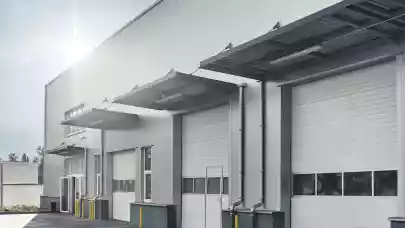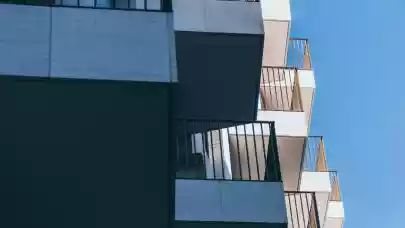
John Palmer, Partner Associate, Real Estate Advisory at Deloitte Poland, talked to Property Forum about the rapidly changing landscape of the land development market in Poland and its current attractiveness to foreign investors.
How do you see the importance of the availability of development sites increasing and land banking becoming a part of the strategy for large manufacturers, logistic service suppliers and other global corporates?
International companies entering or expanding into CEE (large manufacturers, logistic service suppliers and other global corporates) will increasingly require new Build-to-Suit (BTS) buildings to meet their bespoke requirements and ESG standards. Suitable and de-risked development sites to accommodate such BTS facilities are an essential must-have for such companies to match their business strategies.
BTS is defined as a “real estate transaction where a property owner or developer will construct a building for sale or lease in line with the tenant's or buyer's specifications”. Uniform logistic big box warehouses can sometimes be adapted and fitted out to the occupier’s requirements, however, specially designed and specific stand-alone BTS is often the only solution to meet all the business needs of the occupier.
The trend towards production and supply nearshoring is driving an increase in BTS facility requirements for international companies in CEE and in turn the need for well-prepared and positioned development sites. Nearshoring can be defined as moving production or supply to locations closer to the markets of consumption.
On the domestic or near-to-home market, direct investment is also driving Build-to-Suit requirements where previously a farther away location would have been selected, with the existing premises being outdated, inefficient and not meeting ESG standards of the company.
Therefore, de-risked development land sites that can accommodate new and efficient Build-to-Suit buildings within a short build time frame are essential for corporates and international companies as they reinvent themselves, relocate and occupy new buildings that meet their and their customers’ ESG requirements.
Sites that are ready-to-go platforms for development are essential as corporates see that internal reinvention becomes imperative to the longevity and success of their company.
Development sites are in extremely short supply in Western Europe and land supply is not enough to accommodate all new nearshoring requirements. In CEE, development sites to accommodate BTS can be found and are available but international companies should understand that such sites are in limited supply and should be secured and land banked as early as possible in order to meet their strategic business plan needs.

John Palmer
Partner Associate, Real Estate Advisory
Deloitte Poland
How would you assess the state of Polish law on land development? Developers have been complaining for years that it is outdated, excessively complicated and administrative procedures are prolonged indefinitely.
Polish legislation on land development is generally efficient and functional and permitting is a less prolonged process than often found in Western Europe.
In Poland, the key site de-risking permit is an Environmental Impact Permit (EIP). Once obtained for a specific investment, the required Building Permits should be more of a formality.
The EIP application in simple terms presents everything that goes into and comes out of a proposed building, i.e. people, waste, traffic, access, goods, utilities, water disposal etc. and the impact of these on the environment. A green light from all public authorities and utility providers involved is required to obtain the EIP.
Is the focus of development requirements of corporates increasingly focusing on CEE?
Focus on CEE relocation is particularly observed among international companies representing machinery, automotive, electronics, electricals, and consumer goods (often cloths) sectors.
The changing global landscape is highlighting the inefficiencies of international manufacturing companies and increasing the focus on CEE. Corporate businesses are successively looking at nearshoring to CEE to build their supply chain resilience, in the need of a more sustainable global footprint. (ABB 2022 survey revealed that 74% of European businesses are planning to nearshore their operations).
Just in time (JIT) global supply lines and the World Trade Organization organized trade and investment agreements established over the last decades are often proving to be inefficient and broken. International companies must now quickly insulate themselves from dependency on Asia and reposition their production capabilities closer to their final customers.
Cost is a key determinant of location decisions. The wage savings that historically Asian offshoring offered against CEE have become negligible. Shipping costs have also increased dramatically especially due to the current Middle East conflict and goods having to find longer haul alternative routes into Europe.
Corporations must also focus on sustainability and the social impact of their businesses to meet strategic, funding, and legislative requirements. This means reducing the embedded carbon footprint of final products. To do this transport routes must be shortened by having suppliers closer to the main markets, and new and efficient facilities built in optimal locations to replace older buildings constructed before the ESG era.
More companies mentioned nearshoring in 2023 earnings calls than any previous year since 2010, (according to HSBC). More than USD 82 billion was pledged to manufacturing projects by foreign companies in 15 nearshoring destinations in Central and Eastern Europe (CEE) and North Africa between 2022 and 2023 (according to research from FDI Markets). This was the highest two-year figure ever and marks a 62% increase compared to the pre-pandemic years of 2018–2019.
It is worth noting that according to Bloomberg (February 2024) new foreign direct investment into China fell to the lowest level in three years. FDI into China fell from Japan, Taiwan and Korea. The continuing weakness highlights how foreign companies are pulling money out of the country due to geopolitical tensions and higher interest rates elsewhere.
Manufacturing investment in Poland in 2022-23 was USD 13.85 billion compared to USD 5.65 billion in 2020-2021. This is all manufacturing FDI excluding energy industries (source: FDI intelligence). Examples of such investments are Intel building a new state-of-the-art semiconductor assembly and test facility near Wrocław and Volkswagen soon continuing the expansion of their van production plant in Września near Poznań.
How essential is it for the occupier to acquire derisked sites with due diligence and zoning in place?
It is essential for the occupier to acquire a derisked site to take away any timing and building deliverability risk. There is an opportunity for developers with local expertise to work up and deliver permitted sites after full satisfactory legal and technical due diligence that fits the corporate business timing plan.
Manufacturers will often fund and own their own Build-to-Suit. The specifics of the facility often do not match the forward funding requirements or flexibility of space needed for a traded developer. However, the corporation can utilize the developer to build the facility under a Development Management Agreement (DMA) and, investment-wise, create a sale and leaseback product.
For a large manufacturer, logistic service supplier or other global corporation (can be classified as Foreign Direct Investment or FDI) the site should:
- Should enable a finished operational complex within 18/24 months from securing the site and therefore be de-risked in respect of technical and legal due diligence and hold an Environmental Impact Permit.
- Have zoning for logistics and light production or added value services and not just warehousing.
- Have zoning to build towers high enough for automation. Such sites are in short supply and hard to find. The use of automation is expanding and for this Build-to-Suit premises are needed to fit the specific occupier requirements. Automated racking or production towers are often over 25 meters in height and need to be built to fit the occupiers’ needs. Such elements are often not an investment product and have to be financed by the corporation. There are signs of increased automation and robotization with the average capex pledged to FDI projects in the industrial equipment sector reaching an all-time high between 2022 and 2023.
- Have zoning to allow 24-hour operations.
- Have zoning possibilities to undertake production processes such as painting or welding.
- Allow PV panels on buildings' roofs and yards.
- Allow noise from production and truck movements.
- Have sufficient electricity, gas, industrial water, waste capacity, sewage and utility hookups.
- Be located in a preferred micro-location with access to staff, qualified workers and public transport.
- Be near a rail freight terminal.
- Ideally, be located in the Special Economic Zone and make use of incentive possibilities.
- Be a site that has clear land tenure (ideally freehold) and funding possibilities and can be procured or developed as a Build to Suit to Own, Build to Suit to Lease, Future Sale Leaseback, with Developer expert involvement.
Is the complexity and timing of obtaining permits increasing in consideration of ESG?
Buildings are becoming more complex as developers, banks, funders, and corporates adopt ‘responsible’ investing. The complexity of the new buildings requires high-level expertise and best-in-class advisors and developers to navigate the permitting processes.
Society, regulators, customers, and other stakeholders are increasingly concerned about the activities in high-emitting sectors, often manufacturing and FDI-type occupiers, and expect companies to implement sustainable buildings. The existing and upcoming policies and regulations encourage companies to embed sustainability into their strategy and operations as well as disclose their ESG performance.
CBAM (Carbon Border Adjustment Mechanism) aims to encourage cleaner industrial production in non-EU countries and will come into force in 2026. Importers will need to pay for CBAM certificates corresponding to the quantity of goods imported into the EU.
EU Taxonomy includes classifying environmentally sustainable economic activities with disclosures published as part of non-financial statements or companies’ annual sustainability reports.
New facilities must encompass the following for corporates to be in line with their business strategies:
- A friendly environment for employees i.e. providing well-being areas.
- Best-in-class ecological technical specification.
- Photovoltaic panels.
- Electric vehicle charging points.
- Rainwater recycling/collection system.
- Generate a minimal carbon footprint.
- BREEAM New Construction certification of the highest grades or similar certification.
- Heating via heat pumps and move away from the use of gas.
What are the advantages of Poland for the large Foreign Direct Investors and what incentives are available?
A key advantage of Poland for Foreign Direct Investors is the possibility of building high-standard ESG-orientated buildings (from manufacturing to logistics) within realistic time frames procured by experienced and proven developers and contractors.
Development sites can be acquired with appropriate zoning, services, and utilities to accommodate large investments.
The geography of Poland should enable the corporation to find and fit a site and location to meet their needs to serve their consumer and client base.
With respect to government assistance, companies considering investments in Central Europe can benefit from multiple incentives both at the investment and operational phases.
Countries in the CEE region offer cash grants and tax incentives for CAPEX and the creation of jobs. Entry criteria and level of support depend on investment parameters and location. Regional incentives are granted only for initial or new investments.
Value of support can be significant and for large company investments can amount to:
- 40% in the Czech Republic,
- 50% in Poland. The maximum level of aid a project can receive depends on the size of the company and where in Poland the project is to be located. Regional aid can be granted in different forms such as Corporate Income Tax (CIT) exemption, government grants (support from the domestic budget) and cash grants or loans from the EU funds,
- 60% in Slovakia and Hungary,
- 70% in Romania.
Additional support may be available for training employees.
Countries in the CEE region are significant beneficiaries of the European Union funds and can offer, on top of the above, investment support incentives for R&D and innovation implementation and activities aimed at decreasing impact on the environment. For example, intermodal rail terminals that shift truck traffic from road to rail.



